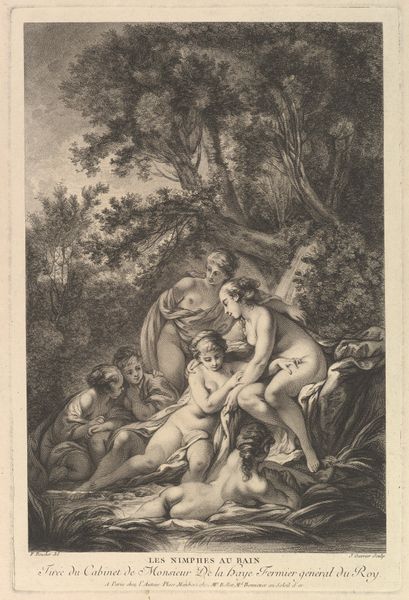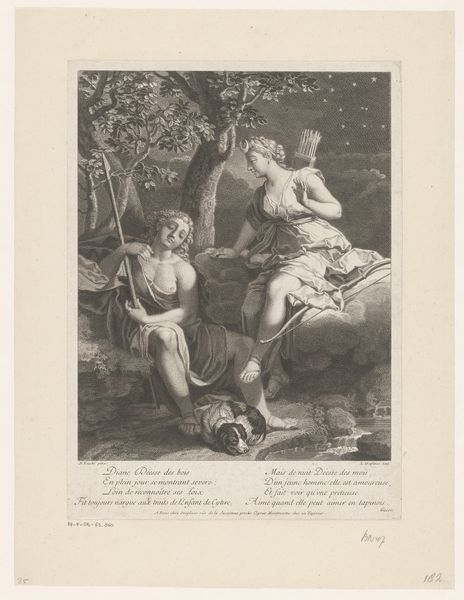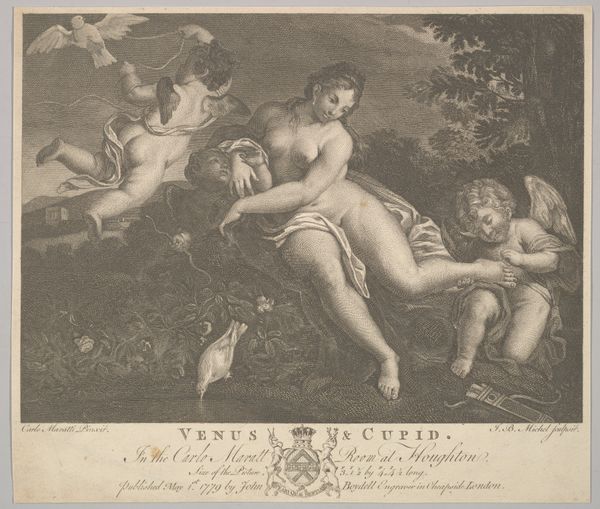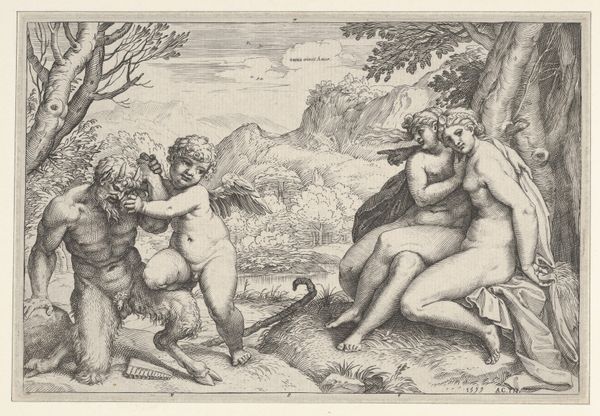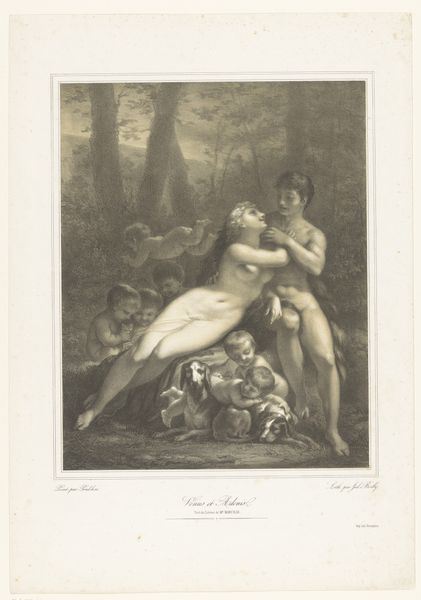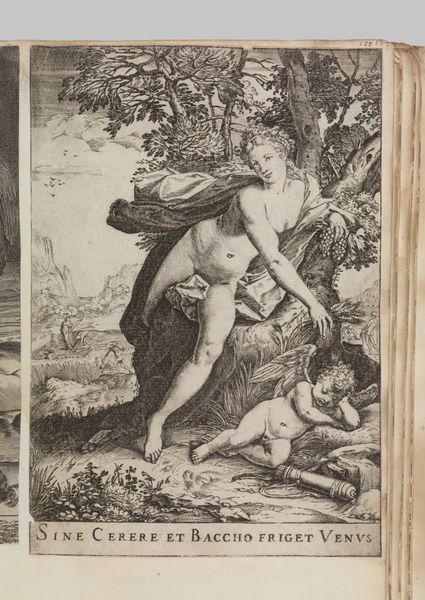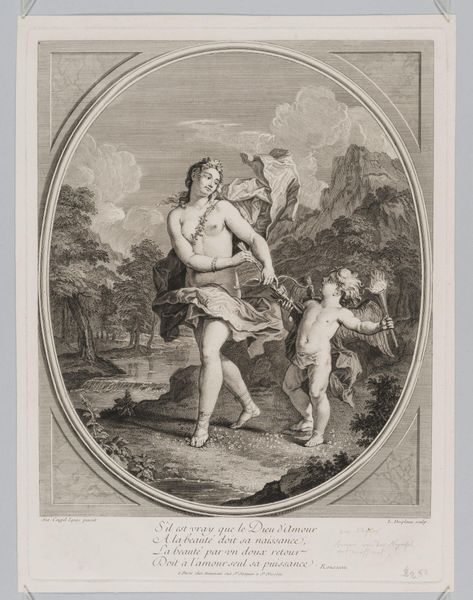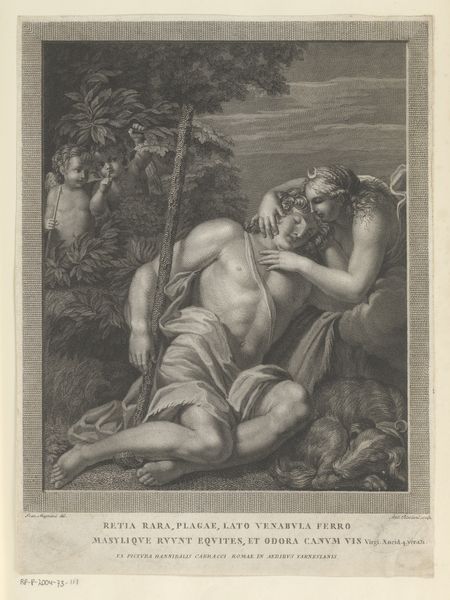
Venus mourning Adonis, seated beneath a tree and embracing him, with Cupid at right 1781 - 1791
0:00
0:00
Dimensions: Image: 7 9/16 × 6 5/8 in. (19.2 × 16.8 cm) Sheet (Trimmed): 9 3/16 × 7 3/8 in. (23.3 × 18.8 cm)
Copyright: Public Domain
Curator: Standing before us is a print entitled "Venus Mourning Adonis, Seated beneath a Tree and Embracing Him, with Cupid at Right," created between 1781 and 1791 by Gérard René Le Vilain. Editor: My immediate reaction is the high drama—it’s like witnessing a theatrical scene frozen in time. The contrast between the dark, almost claustrophobic background and the luminous figures is striking. Curator: Absolutely. Let's consider the formal elements. Notice how the composition is organized around these embracing figures—Venus and Adonis. The artist has employed very fine lines in a masterful way, which, when cross-hatched, creates a full tonal range for each form. Look at the dynamic arrangement—note how their intertwined limbs create a complex interplay of shadow and light that guides the viewer’s eye. Editor: And what about the story they tell through this dramatic composition? This classical subject, of Venus grieving over Adonis who died in her arms from a wild boar attack, underscores themes of mortality and doomed love so poignant to women, even today. This romantic representation speaks to an asymmetrical dynamic where Venus holds all the power as Adonis’ fate relies upon her decisions as goddess of love. The choice to position Cupid almost as a passive observer only serves to intensify the feelings of helplessness when in the grasp of tragedy. Curator: Agreed. There’s definitely that layered emotional depth embedded in those mythic signifiers. The figures here exhibit the Neoclassical ideals of beauty—balanced and idealized forms—although Le Vilain's baroque influences are visible in the dramatic intensity. Notice the intentional play with positive and negative space in Adonis' extended, contorted body, and that gives dynamism and enhances this artwork. Editor: What I also appreciate is the political tension underlying these lavish artistic renderings, given that such images were popularized, circulated and coveted largely because of royal and aristocratic patronage during this moment in French history—which was right before their fall. Prints like these underscore the detachment of powerful patrons and the socioeconomic conditions prevalent just before revolution, signaling major class differences, such as lack of representation, agency, and access, for non-elites at this historical juncture. Curator: That's a perspective worth further consideration, especially given the changing values during this time in the late eighteenth century. Understanding prints such as these allows us to grasp what beauty signified aesthetically and what such images might signal socially. Editor: I’ll never see tragic love stories quite the same way again.
Comments
No comments
Be the first to comment and join the conversation on the ultimate creative platform.
